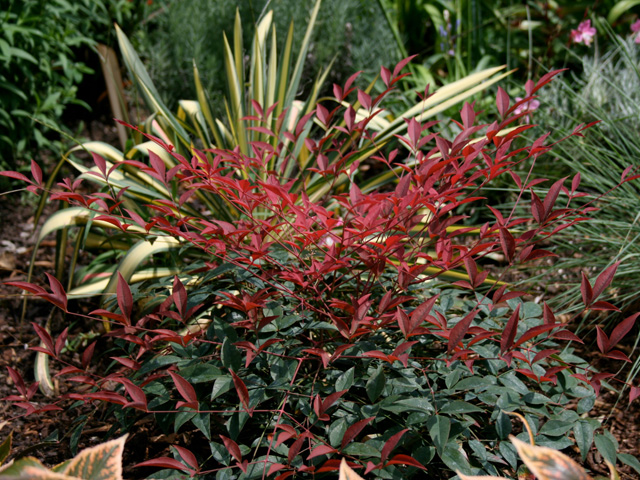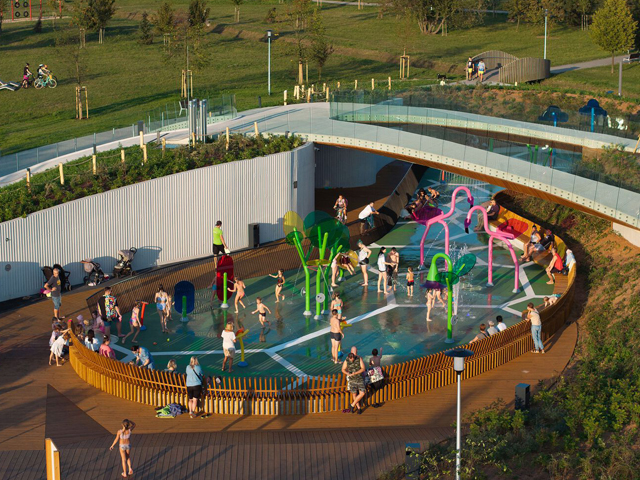SAFE EXOTIC ALTERNATIVES
14 Dec 2016
Using exotic plants in landscaping can cause long-term problems by encouraging invasive weeds. New forms of exotics developed by Ozbreed now offer viable alternatives that are 100 percent safe and amazingly tough.

Weedy garden plants evoke mixed emotions in the landscape gardening world. Some hate the chance of a plant becoming a weed and want the plant banned, while others are filled with the dread of losing another plant from their garden pallet. Yet, recent plant breeding by a number of organisations is giving all parties their desired outcome. Non-invasive forms of old and new exotic favourites are being bred to be safe, with a lot of recent activity in this sector.




Last year Gazania was banned in South Australia, but luckily Sydney University and Nuflora had breeding projects to produce safe seed-free Gazania plants. Plants like Double Gold™ Gazania hybrid ‘GT20’ PBR are not only 100 percent safe, they are truly beautiful and amazingly tough. Now in other states, such as Western Australia and Victoria, sales of the safe varieties are increasing, to the detriment of the invasive types.
Another example was the possible ban in many parts of NSW of the old landscape staple Raphiolepis indica, which if banned would be sorely missed. Luckily the good work of breeding companies like Ozbreed and Paradise Plants provided research that their varieties are female infertile and safe, and they now have permits to be sold in NSW. This trend will hopefully continue into Queensland because the truth is the common form of Rhaphiolepis is a prolific seeder, and the seeds are highly fertile, but the safe ones are just that, safe, giving Australia the best of both worlds – beautiful, reliable plants without the weed risk. Cosmic White™ Raphiolepis indica ‘RAPH01’ PBR and Cosmic Pink™ Raphiolepis indica ‘RAPH02’ PBR had a scientific paper written that not only showed female infertility but apomictic seed non-viability, making them ultra-safe. However, breeding is not just about safety, these plants give larger more prolific flowers and immunity to diseases that sometimes affect some Rhaphiolepis.
Bunnings is getting behind safe exotic plants and is often leading the way in encouraging the industry to take this approach. NGINA has been helpful facilitating talks between the government and the industry to allow these exemptions from bans to be realised. Companies such as Ozbreed and Nuflora now have specialised breeding programs to breed non-invasive exotic plants, and some of this breeding is truly cutting edge. For example, Nuflora hopes to add more gazanias with a multitude of colours that are triploid and sterile. The breeding involved here has taken 22 years and a huge investment.
So what are some of the other safe, non-invasive forms of exotics that have been released over the last decade?
Many types of Agapanthus have been released that have low seed set, and this has virtually removed the threat of invasiveness with this plant. Gardeners are shunning the highly fertile seed-grown types, opting instead for safer low-fertile forms. If a few seeds form, an Agapanthus is not invasive, but a common seed-grown form could have 50 to 80 seeds on a single head making it 20 to 30 times more fertile than most cloned types. Modern Agapanthus are selected to grow better, have nicer flowers, and most of all, low seed set. These plants are then grown in tissue culture and are sold throughout Australia as safe clones. A 'clone' is simply another term for 'micro division' or a 'cutting-grown plant'. Since the safer types have hit the market, Agapanthus sales have greatly increased, so it shows people want safe plants.
The common Nandina, grown as larger shrubs used to produce seed that could occasionally escape and become invasive, is rarely grown these days. The industry has almost completely switched to safe clones, such as Gulf Stream. Three safe new varieties are taking Nandina to new ground, not only being totally safe but having red new growth foliage for up to nine months per year.
Obsession™ Nandina domestica ‘SEIKA’ PBR is the real star, with fine red foliage, month after month. Nandina normally only turn red in winter, but Blush™ Nandina domestica ‘AKA’ PBR, Flirt™ Nandina domestica ‘MURASAKI’ PBR and Obsession™ Nandina have changed all that, with red growth in the warmer months as well.
Ten years ago Liriope were mainly grown from seed and hence would pose more of a risk than cloned low-seed set types. These days most are done from division and mainly low-seed set types are used. Evergreen Giant is no longer a true variety because many nurseries grew it from seed, and the form is now nothing like the original. In fact, you can buy more than thirty forms of Evergreen Giant from around Australia, and many of them full of seed, unlike the original. Just Right® Liriope muscari ‘LIRJ’ PBR on the other hand rarely, if ever, sets seed. It is always the same plant because it is only produced by division, and does not burn in the full sun. It is quickly becoming the evergreen Liriope of choice in Australia. Now that most growers have gone away from seed production of Liriope, this will be one exotic garden plant that will remain safe to plant. There are some amazing low-seed set types, such as Isabella® Liriope muscari ‘LIRF’ PBR and Silverlawn™ Liriope muscari ‘LIRSS’ PBR. These two types can be mown once per year and can survive in almost full shade.
About a decade ago sales of Dietes started to drop in Australia because people thought they seed too much. Again, now enter the breeders. Ozbreed has developed two non-invasive forms: Fine Divine™ Dietes bicolor ‘Di2’ PBR, a fine leaf safe form of the yellow flowering Dietes bicolour and Grand Star™ Dietes grandiflora ‘Di1’ PBR, a grandiflora type with very low seed set and beautiful flowers.
Exotic lawns are the mainstay of turf grass in Australia. There is only one widely available native lawn, called Nara™ Zoysia macrantha ‘MAC03’ PBR. Naturally, it is safe, but how do other lawn types fair?
Buffalo has never become a weedy species and has naturalised where it is mown, or in some parts along the coast, but it has not smothered out other plants, so Buffalo has been classed as a safe turf type. Some have very low seed set, such as Palmetto® Stenotaphrum secundatum ‘SS100’ PBR or Sapphire® Stenotaphrum secundatum ‘B12’ PBR, but realistically Buffalo is so safe it is not a problem. Couch can be invasive, but hasn’t really become a problem in Australia, and is a useful sports turf. Kikuyu will spread quite effectively by seed, especially as birds love the seed and spread it widely. Yet again, plant breeding has come to the rescue, and there are now a number of predominantly male sterile strains, such as Kenda® Pennisetum clandestinum ‘KIK203’ PBR. It is expected that over the next decade, these types will dominate. Empire™ Zoysia japonica ‘SS500’ PBR is extremely non-invasive and has become very popular on the roadsides with councils because it needs far less mowing. Therefore, thanks to breeding most lawn types are very safe.
So what can you do to help?
The simplest way is to support safe, non-invasive products, and buy these great alternatives. Letting your customer know that you are using safe forms is another way to help. Finally, avoid seed-grown exotic plants because they are the ones that become invasive. Low seed set forms that are cloned via division, tissue culture or cuttings are the safe way to plant exotics.
For more information visit www.ozbreed.com.au
Words by Todd Layt
Images (top to bottom): Queen Mum™ Agapanthus orientalis ‘PMN06’; Double Gold™ Gazania hybrid ‘GT20’; Flirt™ Nandina domestica ‘MURASAKI’; Cosmic Pink™ Rhaphiolepis indica ‘RAPH02’.







